The History of Bicycle Brakes
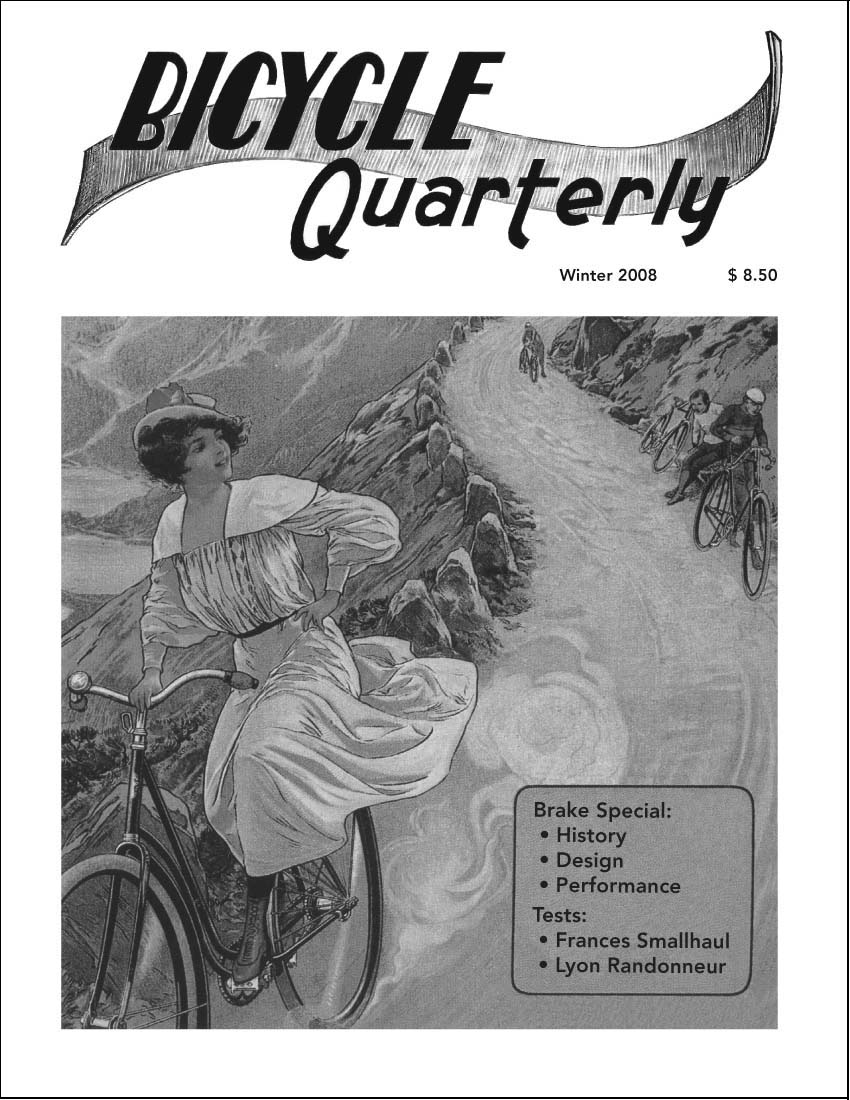
Bicycle Quarterly always has been intended as a timeless resource, rather than a magazine to be read once and then recycled. Over the last 8.5 years, we have published no fewer than 1711 pages! Many issues are dedicated to a topic and provide an incredible resource for very little money. From time to time, we’ll feature a back issue in the blog.
Vol. 7, No. 2 was about brakes. As a fan of The Dancing Chain, the illustrated history of bicycle derailleurs, I wanted to do something similar on brakes, and this issue of Bicycle Quarterly was the result.
With more than 80 drawings (most from the pen of Daniel Rebour) and dozens of studio photographs, this issue charts the development of bicycle brakes. It explains why sidepull, centerpull and cantilever brakes were developed and how they work. It looks at early hydraulic brakes and disc brakes, different brake lever designs and even examines whether it is better to operate the front brake with the left or the right hand. (There are good reasons for either way.)
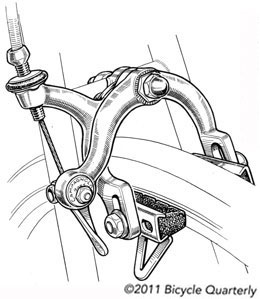
You’ll find old favorites like Campagnolo’s classic sidepull brakes (above) and Mafac’s cantilevers and centerpulls alongside truly oddball designs. As cantilevers became popular in the 1940s, many designers tried to improve on the standard design. Here are just four interesting solutions.
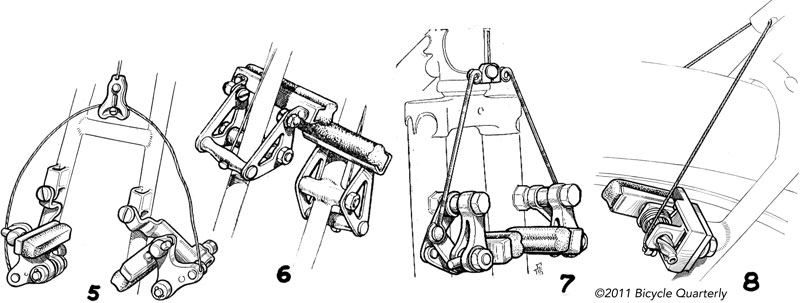
Does anybody know how brake No. 7 in the drawing above works? It’s a CLB cantilever from 1948, with a linkage to push the brake pads straight toward the rim, rather than rotating them. (Standard cantilever brake shoes must be adjusted as they wear, otherwise, they don’t touch the rim squarely any longer.) On the CLB brake, it appears that the straddle wires push downward, rather than pull upward. If anybody has a photo of this brake, I’d love to see it.
No. 5 is a CPM cantilever brake that mounts to the posts of a Jeay roller-cam brake (see below). When I first saw one, I thought it was a clever retrofit for older frames, but in fact, it was intended as a quick release. Now 6 is a brazed-on version of the British Resilion cantilevers (which originally dates from the 1920s), while No. 8 uses a corkscrew mechanism similar to the old Cyclo derailleur. I doubt the latter worked very well!
Some brakes are almost forgotten today, but at the time set new standards for performance, like the 1920s Jeay (below), which later saw a re-incarnation as the Roller-Cam for mountain bikes.
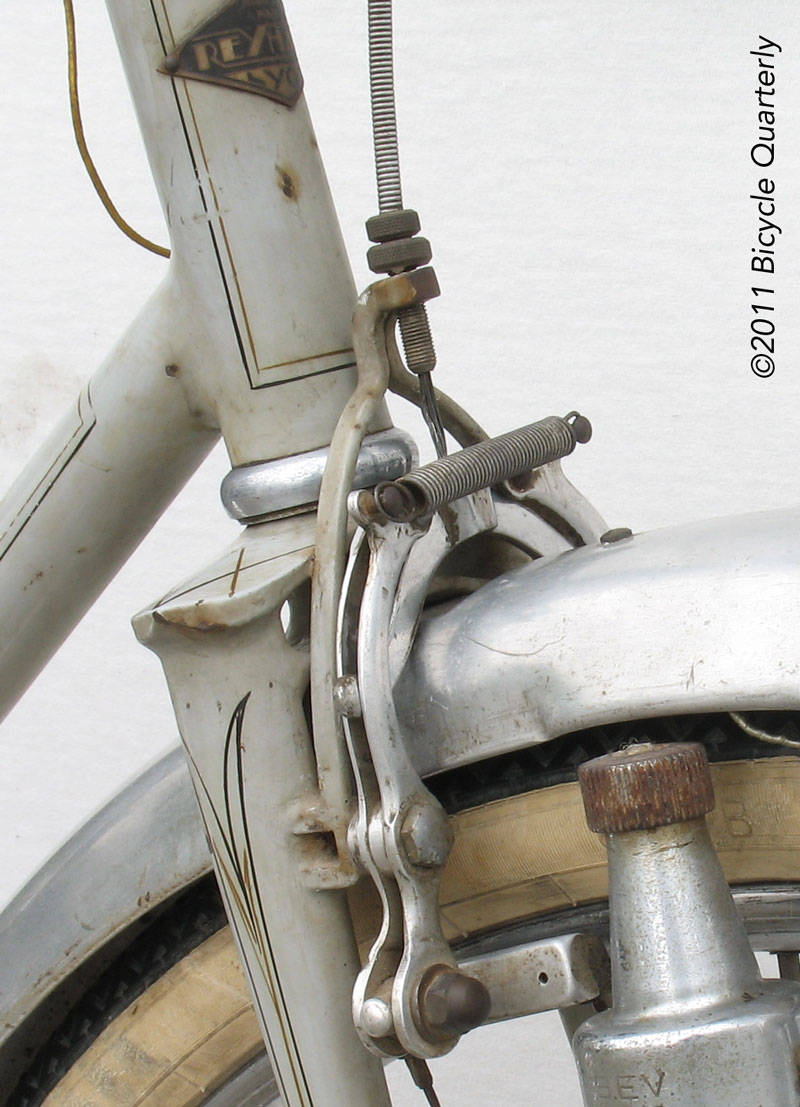
Of course, no issue of Bicycle Quarterly would be complete without bike tests. We rode an innovative Frances Smallhaul cargo bike and a classic Lyonsport Randonneur, and tested modern long-reach dual-pivot brakes. We also examined handlebar shapes. To round off this issue, we took you on a trip along the Baltic coast of Germany just after the fall of the Iron Curtain, through a landscape suspended in a no-man’s land between old and new (below). Here are more details of this classic issue, and here you can order your copy.
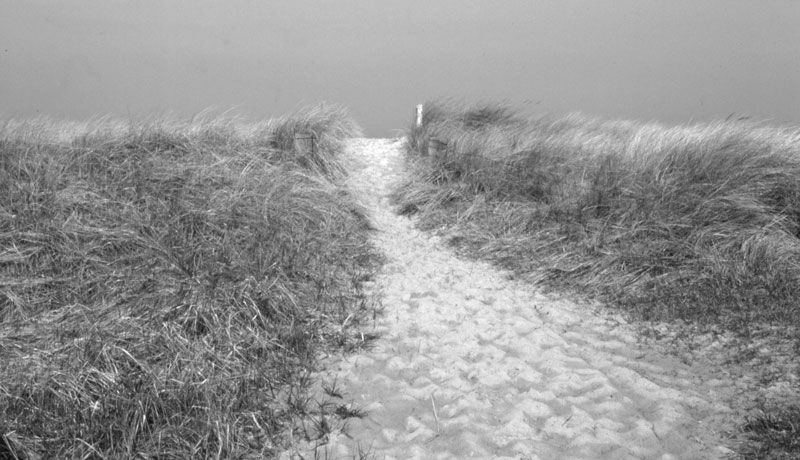
I am sure somebody will ask about the cover illustration of the “Brake Special” (top): It is an old ad for Torpedo coaster-brake hubs. The lady in the flowing dress outruns all the exhausted racers on their fixies, as she has brakes that allow her to coast safely at high speed.


